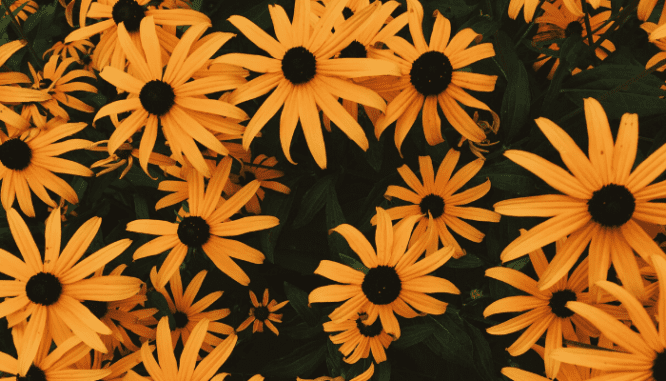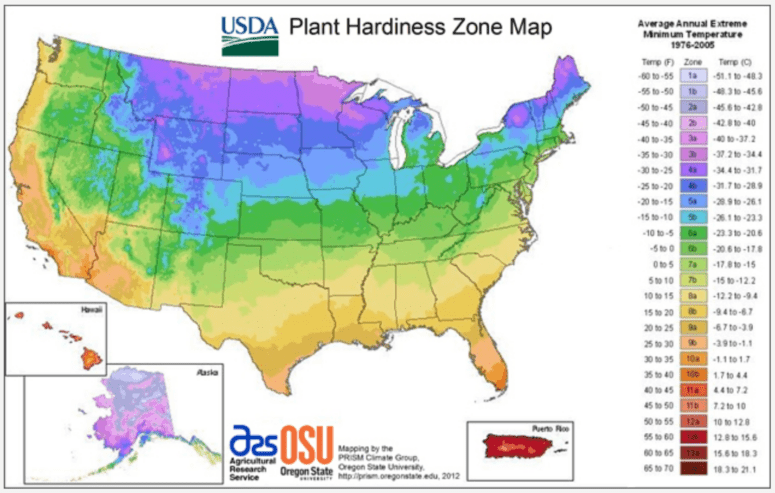16 Plants That Will Bring Your Curb Appeal to Life
- Published on
- 5-6 min read
-
 Christine Bartsch Contributing AuthorClose
Christine Bartsch Contributing AuthorClose Christine Bartsch Contributing Author
Christine Bartsch Contributing AuthorFormer art and design instructor Christine Bartsch holds an MFA in creative writing from Spalding University. Launching her writing career in 2007, Christine has crafted interior design content for companies including USA Today and Houzz.
You’ve long admired the lovely yards of your neighbors, which appear to blossom and bloom in effortless glory. Now you’re ready to give your own home some curb appeal love — but where to begin?
“Fresh, green, live plants around your house makes the place more inviting,” says Zachary Flowers, a top-selling real estate agent in the Tacoma, Washington area. For anyone unfamiliar with the world of landscaping, the options for enhancing curb appeal can be overwhelming. Before you head to the nursery, consult our list of top-recommended curb appeal plants, featuring advice on how to find the best varieties for your climate and desired level of upkeep.

16 plants to improve your home’s curb appeal
Mother nature has provided a wide variety of plants that thrive in different hardy zones, making it almost impossible to compile a comprehensive list. So we’ve narrowed down our selection into four specialized categories: fast-blooming flowers, showstoppers, color-splash shrubs, and low-maintenance options.
1. Fast-blooming flowers
If you need an instant boost of color, these flowering plants that will work wonders right away. Create an array of color in a full flowerbed, or add color pops throughout your yard by potting these fast bloomers.
- Salvia ‘Indigo Spires’: A fast and non-stop bloomer, Indigo Spires add height as well as color, with 12- to 15-inch spikes of dark purple flowers.
- Rudbeckia fulgida var. sullivantii: Commonly known as a Black-Eyed Susan, this sunshiny, yellow-orange flower with the bold brown center thrives in full sun.
- Portulaca: Also known as the moss rose, this plant blossoms with red, orange, yellow, pink, purple, and white flowers, and thrives in full sun and sandy soil.
- Chrysanthemums: An easy-care flower that’s available in a variety of bloom shapes and colors, including burgundy, lavender, orange, pink, and white.
2. Showstoppers
Need a plant that’ll help your house stand out in a subdivision sea of cookie cutter houses? Check out these visually interesting showstopper plants.
- Aruncus dioicus: Also known as goatsbeard or bride’s feathers, this attention-grabbing plant grows tiny, creamy flowers in feathery spikes that can tower as high as six feet tall.
- Osmundastrum cinnamomeum: Commonly called cinnamon fern, this non-flowering plant can grow up to 2 to 3 feet tall — and wide!
- Ocotillo: This skinny, thorny plant can reach as high as 20 feet, and grows a cluster of fiery red flowers on the end of each stalk that blooms from March to June.
- Chionanthus virginicus: Called a fringetree for its cascading white flowers that resemble cottony clouds, this small tree can also be trained as a shrub.
3. Color splash shrubs
When fast blooming flowers in pots isn’t enough color for you, plant several of these flowering shrubs to give your front yard a major color splash.
- Rhododendron: A flowering shrub that grows best in partial shade and blooms with pink, white, yellow, red, or purple flowers. “The most popular plant in Washington state is the rhododendron. Right now they’re in bloom and you’ll see the bright flowers in just about any neighborhood you drive through,” says Damian Barton, Flowers’ real estate business partner.
- Hydrangeas: A fragrant, flowering shrub that prefers partial sun, and blooms fluffy poms in blue, pink, purple, red, or white.
- Bougainvillea: Sometimes referred to as paper flower, this plant actually grows tiny cream flowers surrounded by brightly-hued bracts that are typically purple or mauve.
- Trumpet vine: A flowering vine that blossoms with orange or scarlet flowers, this plant can tower as high as forty feet and grows so easy it’s considered invasive by some.
4. Low-maintenance
Low-maintenance plants to enhance curb appeal are essential for busy homeowners and will appeal to homebuyers who aren’t looking to take on a lot of work.
- Ribes sanguineum pursh: Red-flowering currant is both drought tolerant and resistant to most insects and pests — plus its flowers attract hummingbirds and butterflies.
- Convallaria majalis: Lily of the Valley may look delicate with it’s tiny white bell flowers, but this tough groundcover isn’t prone to either insect or disease problems.
- Aloe barbadensis: Known by most as aloe vera for its medicinal benefits, this low-key succulent thrives so well that it rarely needs watering even in hot desert yards.
- Variegated arboricola: Also known as variegated schefflera, this tropical plant with bright yellow and green leaves thrives in both sun or shade, and requires regular, but not frequent watering.
“I recommend the variegated schefflera because it’s bug resistant and it doesn’t suck up too much water,” advises Judith Topper, a top-selling real estate agent in Longwood, Florida.

5 tips for creating curb appeal with plants
Plants have specific needs that need to be met in order to thrive, and if you don’t pay attention to the requirements of the plants you pick, they’ll die.
So, consider these four factors before you go plant shopping.
1. Check your climate and hardy zone
No matter how much you love lilacs, you can’t plant them in Arizona and expect them to thrive under the punishing summer sun or survive without winters cold enough to go dormant. That’s why it’s wise to study up on which plants can survive and thrive in your climate.
One way to do that is to identify your hardy zone, which identifies your region’s climate conditions and how they impact plant growth. When you go to your local nursery, you’ll find that many plants are labeled as hardy for your particular region. This makes it much easier to find foliage that will stay green and lush from the moment you list until you close on your home sale.

2. Know your growing conditions
The most important growing condition to note is each plant’s sunlight needs. Before you go shopping for greenery, you’ll need to plan where you want to place your plants in the yard and note the specific sunlight conditions of each area throughout the day.
- Full sun: The area gets at least six full hours or more of sun each day.
- Light shade: The area gets only three to five hours of sun each day.
- Partial shade: The area receives only two hours or less of sun each day, or is fully shaded for at least half of the day.
- Full shade: The area gets less than an hour of direct sunlight during the day, or receives only dappled light through a canopy of leaves.
- Dense shade: The area gets no direct sunlight.
When the area gets sun is almost as important as how much sun it gets. For example, a plant that requires partial shade may be able to withstand up to two hours of gentle morning sun, but will wither if those two hours come in the punishing afternoon sun.
Sunlight needs aren’t the only statistics you need to pay attention to on plant tags. You should also look at planting instructions, such as drainage needs, root depth, and how large the plant is likely to grow.
These plant stats that may influence your decision on which ones to purchase, especially if the greenery will someday grow so large that it could damage the house or foundation.
3. Evaluate your gardening ability
Homeowners who claim to have a black thumb probably didn’t do enough research on their hardy zone and growth conditions before planting. However, sometimes it’s not that the plants couldn’t survive, it’s that they die because the homeowner didn’t give the greenery the care it needed.
That’s why it’s important to honestly evaluate your gardening skills and abilities before you tackle any front yard planting. You need to ask yourself:
- How many hours do I want to devote to maintaining my front yard plants?
- How likely am I to forget to water my greenery?
- Will I be tempted to overwater container gardens?
- Will I remember to fertilize and feed as necessary?
- Do I have the time and attention to watch out for pests or fungal diseases?
If you’re at all concerned with your ability to keep your front yard growing strong, make sure you buy low maintenance, drought-resistant plants that can survive a distracted home seller.
4. Apply the elements of design to your landscaping plan
You can’t achieve great curb appeal by haphazardly sticking a couple of shrubs around your yard. You need to have a big picture plan that considers a variety of design elements, including some non-plant options to enhance your front yard.
“I would start with something simple, like inexpensive beauty bark or gravel, which let you refresh an entire landscape for a very low price. Then add a couple of colorful hanging plants or flowers that aren’t going to die on you. It makes a world of difference,” recommends Flowers.
Let’s take a look at how to apply some of the elements of art and principles of design to your landscaping plan:
- Line: Create visual interest by taking your landscaping vertical with hanging plants, climbing vines or vertical gardens.
- Color: Break up the monotony of brown and green landscaping with flowers chosen to enhance the color of your home.
- Repetition: Add an aura of formality of grandeur with a row of sculpted hedges or a matching set of topiaries flanking your front door.
- Pattern: Enhance the manicured look of your yard with lawn striping.
- Texture: Play with texture by adding decorative mulch under your shrubs, crushed gravel to hide grass bald spots below your trees, or natural stone borders around your flower beds.
5. Check your lawn
Not every front yard has a lawn, especially in the southwest, but if you’ve got grass, you need to make sure it’s green and well-manicured.
If your lawn’s lushness needs amping up, there’s a number of options to choose from, which vary by cost and the time it takes to show results:
- Install fresh sod: Average cost of $1,026 to $2,698; instant green grass look that roots within two weeks
- Overseeding: Around $100 if you DIY, or $300 if you hire a pro; visible results within two weeks, requires eight weeks for full establishment (best results in autumn)
- Hydroseeding: Around $1,000 for a 5,000 to 10,000 square foot yard; results in 5 to 7 days, takes 3 to 4 weeks before ready for mowing
“Obviously, landscaping is different between states. Here in Washington state, a nice green yard is preferred, however, sod is relatively expensive compared to other options for planting grass,” explains Barton. “If you have time, you can plant your own seed as an alternative to sod, or have your yard sprayed with hydro seeds, which grows pretty quickly.”
Header Image Source: (Artazum / Shutterstock)
